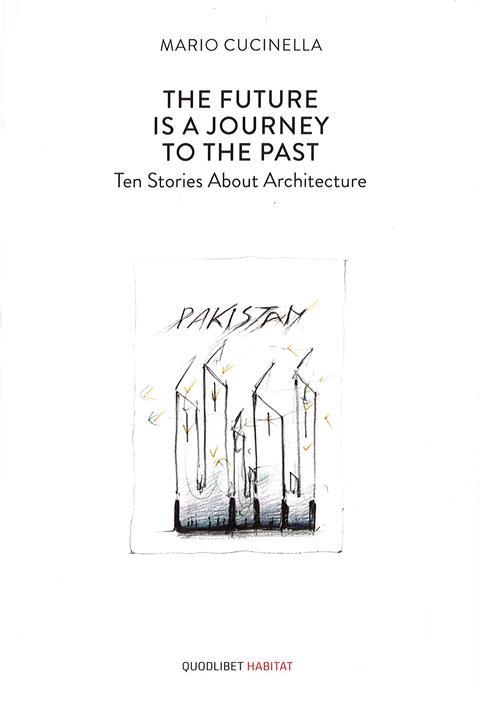Jonathan Glancey enjoys a journey around the world, told through a series of climatically appropriate buildings and landscapes, with Italian architect Mario Cucinella

In the spirit of Marco Polo, the fictional narrator of Italo Calvino’s Invisible Cities, the Italian architect Mario Cucinella, whose busy, fecund practice is based in Bologna and Milan, records the fruits of ten compelling journeys he has made in real life to places and buildings around the world that have taught him, and teach us, imaginative and enduring lessons about the nature and substance of truly intelligent sustainable design. This is The Future is a Journey to the Past, a book of stories told with economy, wit and a humble sense of wonder understanding what previous generations, with few resources, have achieved in very different parts of the world in terms of energy conservation, to surprising, hauntingly effective and often beautiful effect.
The underlying lesson of Calvino’s Invisible Cities, first published in 1972, with its cornucopia of seemingly unlikely cities encountered across a vast and largely unknowable Mongolian empire, described by Marco Polo to Kublai Khan, is that in recent decades cities and their architecture are losing the local identities that make them special and worth going out of our way to experience. Calvino’s crafty conceit, recognised by Kublai Khan, is that the cities Marco Polo describes are multiple, fractured aspects of his home city, Venice. Like Venice, and each in its own way, every city ought to be special.

Equally, in our new global empire of identical development, near-identical architecture and increasingly banal cities, and with architects falling over themselves to claim that the latest unnecessary building types, designed more to make money than sense, are somehow “sustainable”, Cucinella seeks out buildings and places in lands that have been challenged by climate for many centuries. There is much, he says, we can learn from his “The City of Ice in the Desert”, “The City of Invisible Faces” and “The Garden that Wasn’t There Before”. These are the Calvino-like titles Cucinella gives to remarkable cities and places encountered, among others around the world, in Iran, Pakistan, Saudi Arabia and Ireland.
And what a wonderful surprise it was for the author to encounter one of the age-old ice houses in the heart of the Persian desert where, 750 years ago, Marco Polo was served faloodeh, an iced dessert or, as Cucinella puts it, “ice cream - shall we say”, and this in a climate where daytime temperatures can exceed 40°C before noon. From 400BC, Iranians had “understood … the physical principles of the thermal exchange between sky and earth and how they cleverly transformed water into ice.” Rare water, that is, channelled into beautiful domed brick cisterns that in the cold of the desert night produced sheets of ice over pools of cold water. When we contrast this to the gas-guzzling ways in which we try to cool our global buildings today - even in mild climates where very few buildings need such mechanical cooling - we can only shake our heads in wonder and learn, perhaps, to re-think climate control.

Cucinella takes us to see houses built underground, cities with skylines sprouting wind funnels, an Italian Renaissance villa cooled by underground ducts ferrying cold air from caverns and grottoes and, perhaps most revealing of all, a sub-tropical garden on the island of Ilnacullin in Bantry Bay off the south-west coast of Ireland nurtured from the 1920s by John Annan Bryce, a Royal Navy officer who collected tropical plants, his wife Violet and Harold Peto, the English architect and landscape gardener. Patiently and ingeniously, this paradisical hideaway was nurtured by planting trees that, while enclosing the site, diverted the currents of prevailing winds. The garden island, a sub-tropical micro-climate achieved through wholly natural means, and a subtle understanding of the ways of air flow flourishes today in waves of fuchsias, camellias, myrtle and scented rhododendrons.
“Today”, writes Cucinella, “traditional dwellings, adapted to climate, culture, and context, are gradually replaced by dwellings informed by imported fashions and by an abstract knowledge, insensitive to the subtle knowledge achieved through a deep experience of nature and local climate, and its potential in terms of adaptation and manipulation.” The architect’s seemingly dream-like encounters prove to be “not nostalgic tales, but the discovery of a past in which to seek information that can help architecture and us in our journey to the future.”
This is a delightful and wholly unpretentious book written by an architect clearly wishing to learn rather than pontificate. Its brevity is a part of its tantalising appeal, although, if the controversial Covid restrictions imposed on travel had not occurred, Cucinella may well have told twenty stories rather than these ten. Ten will do. In a world of energy-hungry global office blocks, hotels, shopping malls and, of course, ice-cream parlours, how one longs for a dish of faloodeh eaten, as Marco Polo once did, in the unlikely setting of the deserts of Iran. Or, of course, perhaps we could have new desert ice houses in our increasingly hot and sticky global cities.
Postscript
The Future is a Journey to the Past: Ten Stories about Architecture by Mario Cucinella, 128pp, Quodlibet, £15.75
















No comments yet